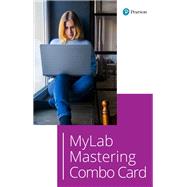For courses in Mathematics for Teachers.
This ISBN is for the 18-week MyLab combo access card. Pearson eText is included.
Develops deep understanding of mathematics that leads to effective teaching
Mathematics for Elementary and Middle School Teachers, 6th Edition connects the foundations of teaching K-8 mathematics to the “why” behind procedures, formulas, and reasoning. Known for her contributions to mathematics education, Sybilla Beckmann helps students develop a deep understanding of the math they will teach.
Future teachers will learn to explain why the standard procedures and formulas of elementary and middle school mathematics are valid, why nonstandard methods can also be valid, and more. Chapters are designed to help students understand how mathematical ideas develop across grade levels. Throughout, the Classroom Activities, Problems, and narrative foster active student engagement in mathematical practices as they study mathematics content. A special Skills Review MyLab® Math course contains practice exercises, a complete eText, and many other resources; for the 6th Edition, the online exercises have been revised to better align with the content of the textbook. The Classroom Activities, formerly bound in the textbook, are now available online (accessible via QR code or short URL from the text) or in convenient 3-hole punch format.
Personalize learning with MyLabMath with Pearson eText
This flexible digital platform combines unrivaled content, online assessments, and customizable features to personalize learning and improve results.
Pearson eText is an easy-to-use digital textbook available within MyLab that lets you read, highlight, and take notes all in one place.
NOTE: This MyLab Combo Access pack includes a MyLab access code plus a loose-leaf print version (delivered by mail) to complement your MyLab (or Mastering) experience. In addition to this access code, you will need a course invite link, provided by your instructor, to register for and use MyLab.











